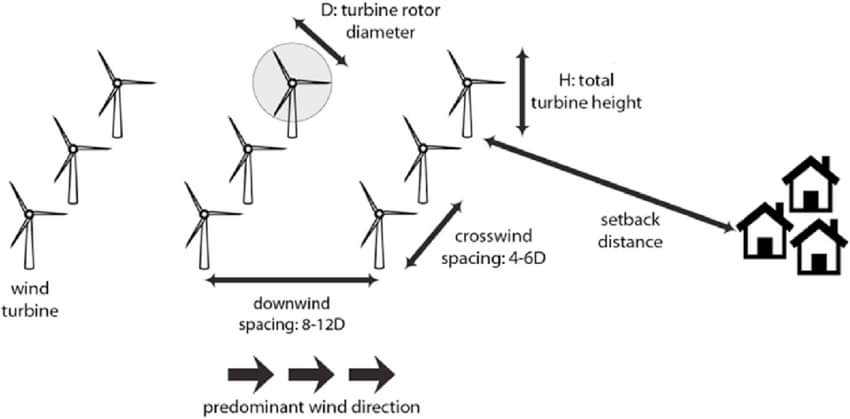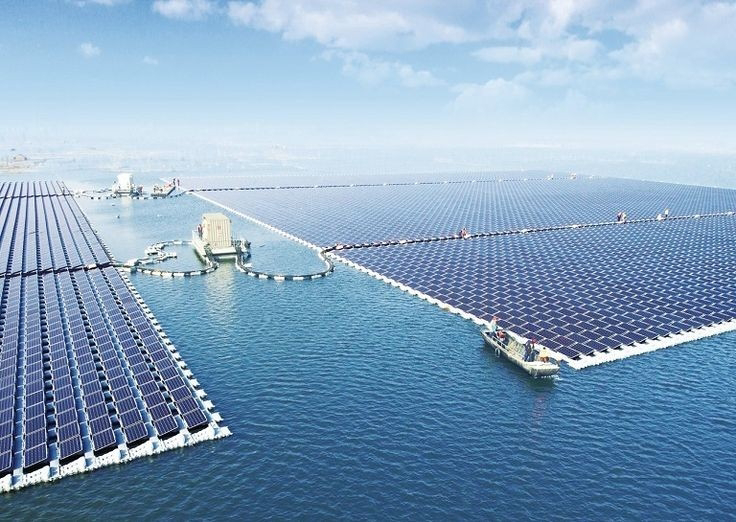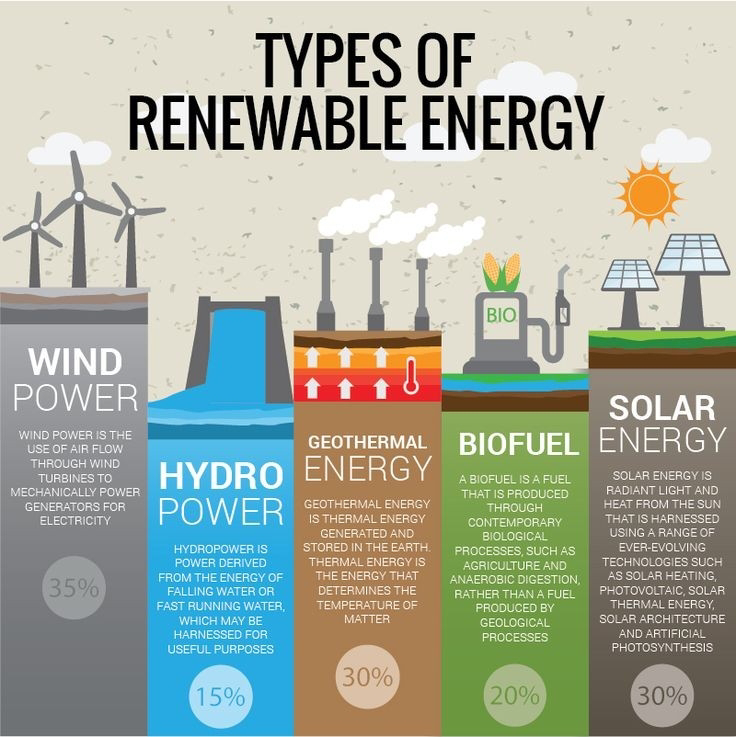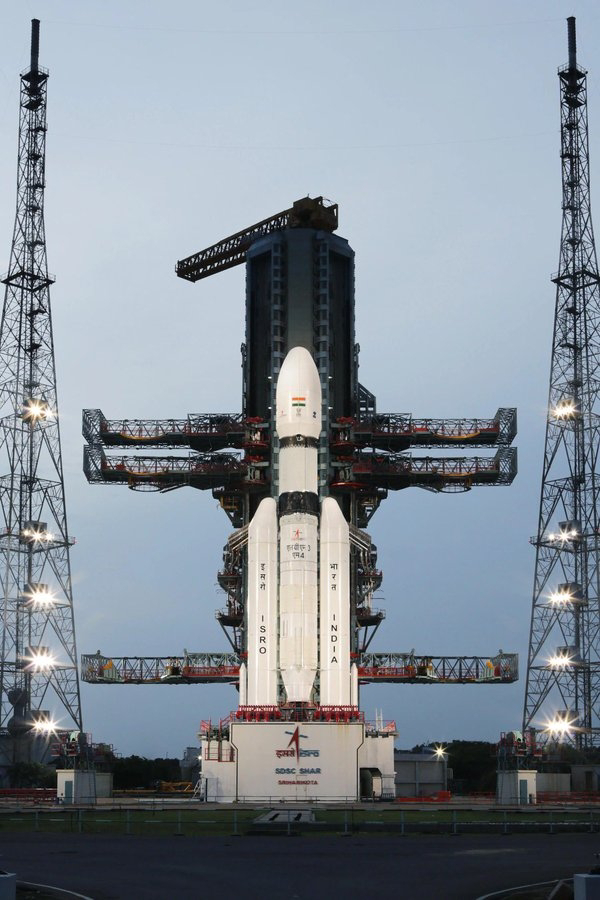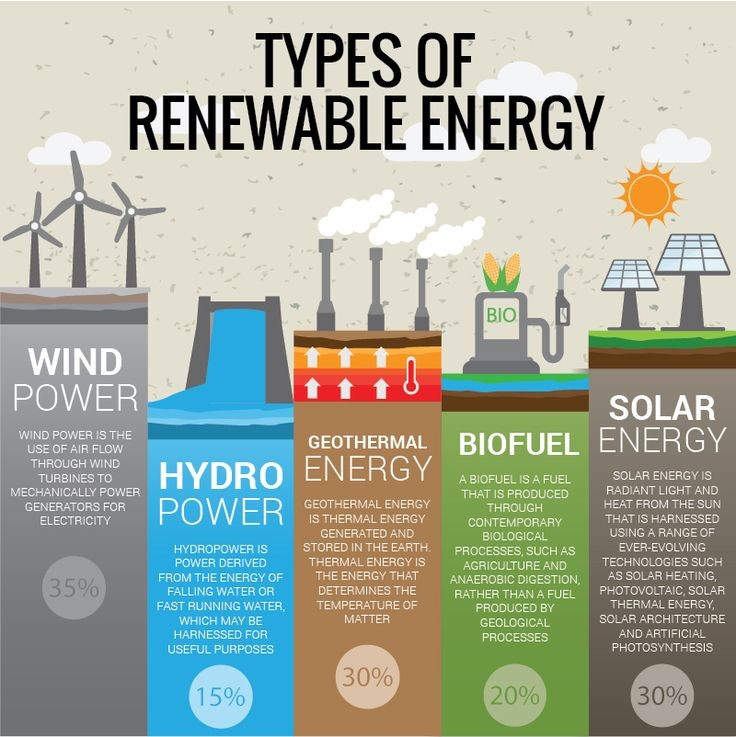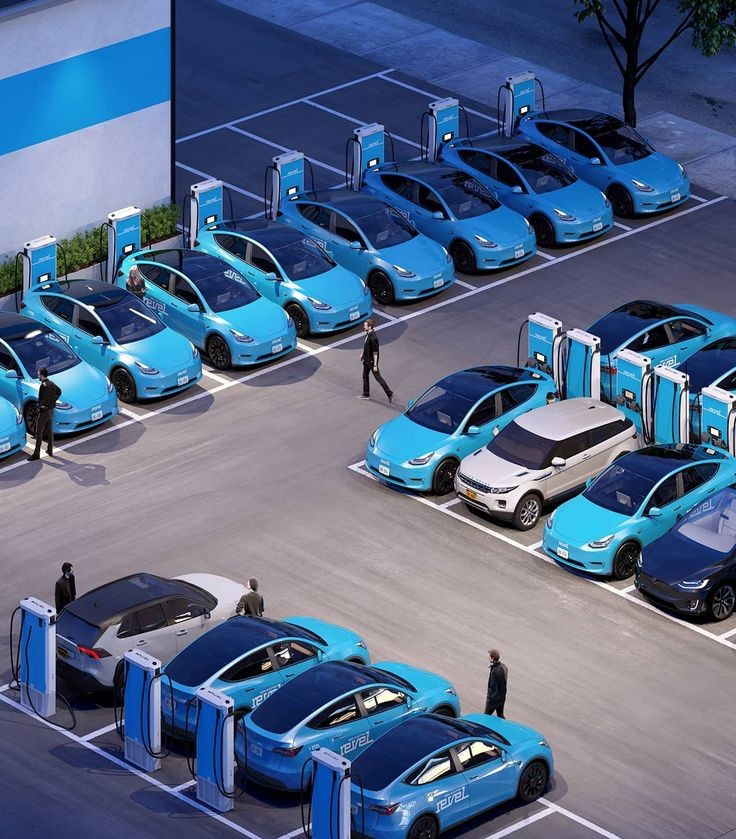Welcome to SparkED, your ultimate destination for all things engineering, science, and innovation! Our blog is a vibrant platform dedicated to showcasing the latest advancements, groundbreaking research, and fascinating discoveries in the world of electrical engineering and beyond. At SparkED, we believe in the power of knowledge and its ability to ignite extraordinary ideas. Our team of passionate writers and researchers is committed to bringing you captivating articles.
Wednesday, 26 July 2023
Spacing between wind turbines
 At SparkED, we strongly believe in supporting and promoting the work of young researchers and scientists. We are interested in featuring and showcasing the groundbreaking studies, experiments, and ideas of emerging talents who are pushing the boundaries of knowledge and innovation.
At SparkED, we strongly believe in supporting and promoting the work of young researchers and scientists. We are interested in featuring and showcasing the groundbreaking studies, experiments, and ideas of emerging talents who are pushing the boundaries of knowledge and innovation.
Saturday, 22 July 2023
Various types of electrical motors
 At SparkED, we strongly believe in supporting and promoting the work of young researchers and scientists. We are interested in featuring and showcasing the groundbreaking studies, experiments, and ideas of emerging talents who are pushing the boundaries of knowledge and innovation.
At SparkED, we strongly believe in supporting and promoting the work of young researchers and scientists. We are interested in featuring and showcasing the groundbreaking studies, experiments, and ideas of emerging talents who are pushing the boundaries of knowledge and innovation.
Thursday, 20 July 2023
Major power system projects of India 2022
Some of the major electricity and power projects and systems in India in 2022:
- Solar projects: India is one of the leading countries in terms of solar power generation. In 2022, the country added over 10 GW of solar capacity, bringing the total installed capacity to over 45 GW. Some of the major solar projects in India in 2022 include the Bhadla Solar Park in Rajasthan, the Kurnool Ultra Mega Solar Park in Andhra Pradesh, and the Rewa Ultra Mega Solar Park in Madhya Pradesh.
- Wind projects: India is also a major player in the wind power sector. In 2022, the country added over 5 GW of wind capacity, bringing the total installed capacity to over 38 GW. Some of the major wind projects in India in 2022 include the Jaisalmer Wind Park in Rajasthan, the Kutch Wind Park in Gujarat, and the Mahanadi Wind Park in Odisha.
- Transmission projects: India is also investing heavily in transmission infrastructure. In 2022, the country added over 5,000 kilometers of transmission lines, bringing the total length of transmission lines to over 200,000 kilometers. Some of the major transmission projects in India in 2022 include the North-South Corridor, the East-West Corridor, and the Green Energy Corridor.
- Smart grid projects: India is also investing in smart grid technology. Smart grids are designed to improve the efficiency and reliability of the electricity grid. In 2022, the country launched a number of smart grid projects, including the Smart Grid National Mission and the Smart Grids for All scheme.
These are just a few of the major electricity and power projects and systems in India in 2022. The government is committed to increasing the share of renewable energy in the country's electricity mix and to improving the efficiency and reliability of the electricity grid. These projects will help India to achieve its energy goals and to provide reliable and affordable electricity to its citizens.
 At SparkED, we strongly believe in supporting and promoting the work of young researchers and scientists. We are interested in featuring and showcasing the groundbreaking studies, experiments, and ideas of emerging talents who are pushing the boundaries of knowledge and innovation.
At SparkED, we strongly believe in supporting and promoting the work of young researchers and scientists. We are interested in featuring and showcasing the groundbreaking studies, experiments, and ideas of emerging talents who are pushing the boundaries of knowledge and innovation.
Sunday, 16 July 2023
Energy and power projects in Asia
 At SparkED, we strongly believe in supporting and promoting the work of young researchers and scientists. We are interested in featuring and showcasing the groundbreaking studies, experiments, and ideas of emerging talents who are pushing the boundaries of knowledge and innovation.
At SparkED, we strongly believe in supporting and promoting the work of young researchers and scientists. We are interested in featuring and showcasing the groundbreaking studies, experiments, and ideas of emerging talents who are pushing the boundaries of knowledge and innovation.
Rawlplug
 At SparkED, we strongly believe in supporting and promoting the work of young researchers and scientists. We are interested in featuring and showcasing the groundbreaking studies, experiments, and ideas of emerging talents who are pushing the boundaries of knowledge and innovation.
At SparkED, we strongly believe in supporting and promoting the work of young researchers and scientists. We are interested in featuring and showcasing the groundbreaking studies, experiments, and ideas of emerging talents who are pushing the boundaries of knowledge and innovation.
Saturday, 15 July 2023
Dust effect on temperature and productivity of solar panels in desert area
 At SparkED, we strongly believe in supporting and promoting the work of young researchers and scientists. We are interested in featuring and showcasing the groundbreaking studies, experiments, and ideas of emerging talents who are pushing the boundaries of knowledge and innovation.
At SparkED, we strongly believe in supporting and promoting the work of young researchers and scientists. We are interested in featuring and showcasing the groundbreaking studies, experiments, and ideas of emerging talents who are pushing the boundaries of knowledge and innovation.
Chandrayaan-3
Chandrayaan-3 is the third lunar exploration mission by the Indian Space Research Organisation (ISRO). It is a follow-on mission to Chandrayaan-2, which was launched in 2019. Chandrayaan-3 consists of a lander and the Pragyan rover, similar to Chandrayaan-2, but does not have an orbiter. Its propulsion module behaves like a communication relay satellite.
The Chandrayaan-3 mission was launched on July 14, 2023, from Satish Dhawan Space Centre in Sriharikota, Andhra Pradesh, India. The spacecraft was successfully placed in a 100 km circular polar orbit around the moon. The lander and rover are expected to land near the lunar south pole region on August 23, 2023.
The main objectives of the Chandrayaan-3 mission are to:
- Demonstrate end-to-end landing and roving capabilities on the lunar surface.
- Study the lunar south pole region, which is thought to be rich in water ice.
- Conduct a variety of scientific experiments to understand the moon's geology, composition, and environment.
The Chandrayaan-3 mission is a significant milestone in India's space program. It is the first time that India will attempt to land a spacecraft on the lunar south pole region. The success of this mission will pave the way for future lunar exploration missions by India.
Some key differences between Chandrayaan-2 and Chandrayaan-3:
- Chandrayaan-3 does not have an orbiter.
- The Chandrayaan-3 lander has solar panels on four sides, instead of only two in Chandrayaan-2.
- The Chandrayaan-3 rover is smaller and lighter than the Chandrayaan-2 rover.
- The Chandrayaan-3 mission is expected to last for one year, while the Chandrayaan-2 mission lasted for about two years.
 At SparkED, we strongly believe in supporting and promoting the work of young researchers and scientists. We are interested in featuring and showcasing the groundbreaking studies, experiments, and ideas of emerging talents who are pushing the boundaries of knowledge and innovation.
At SparkED, we strongly believe in supporting and promoting the work of young researchers and scientists. We are interested in featuring and showcasing the groundbreaking studies, experiments, and ideas of emerging talents who are pushing the boundaries of knowledge and innovation.
Electrical safety tips for home
 At SparkED, we strongly believe in supporting and promoting the work of young researchers and scientists. We are interested in featuring and showcasing the groundbreaking studies, experiments, and ideas of emerging talents who are pushing the boundaries of knowledge and innovation.
At SparkED, we strongly believe in supporting and promoting the work of young researchers and scientists. We are interested in featuring and showcasing the groundbreaking studies, experiments, and ideas of emerging talents who are pushing the boundaries of knowledge and innovation.
Connecting North to South of Afghanistan
 At SparkED, we strongly believe in supporting and promoting the work of young researchers and scientists. We are interested in featuring and showcasing the groundbreaking studies, experiments, and ideas of emerging talents who are pushing the boundaries of knowledge and innovation.
At SparkED, we strongly believe in supporting and promoting the work of young researchers and scientists. We are interested in featuring and showcasing the groundbreaking studies, experiments, and ideas of emerging talents who are pushing the boundaries of knowledge and innovation.
Recent development in electrical engineering
 At SparkED, we strongly believe in supporting and promoting the work of young researchers and scientists. We are interested in featuring and showcasing the groundbreaking studies, experiments, and ideas of emerging talents who are pushing the boundaries of knowledge and innovation.
At SparkED, we strongly believe in supporting and promoting the work of young researchers and scientists. We are interested in featuring and showcasing the groundbreaking studies, experiments, and ideas of emerging talents who are pushing the boundaries of knowledge and innovation.
Lightening
 At SparkED, we strongly believe in supporting and promoting the work of young researchers and scientists. We are interested in featuring and showcasing the groundbreaking studies, experiments, and ideas of emerging talents who are pushing the boundaries of knowledge and innovation.
At SparkED, we strongly believe in supporting and promoting the work of young researchers and scientists. We are interested in featuring and showcasing the groundbreaking studies, experiments, and ideas of emerging talents who are pushing the boundaries of knowledge and innovation.
Friday, 14 July 2023
Electric Vehicles
 At SparkED, we strongly believe in supporting and promoting the work of young researchers and scientists. We are interested in featuring and showcasing the groundbreaking studies, experiments, and ideas of emerging talents who are pushing the boundaries of knowledge and innovation.
At SparkED, we strongly believe in supporting and promoting the work of young researchers and scientists. We are interested in featuring and showcasing the groundbreaking studies, experiments, and ideas of emerging talents who are pushing the boundaries of knowledge and innovation.
Fiber optic lighting system
 At SparkED, we strongly believe in supporting and promoting the work of young researchers and scientists. We are interested in featuring and showcasing the groundbreaking studies, experiments, and ideas of emerging talents who are pushing the boundaries of knowledge and innovation.
At SparkED, we strongly believe in supporting and promoting the work of young researchers and scientists. We are interested in featuring and showcasing the groundbreaking studies, experiments, and ideas of emerging talents who are pushing the boundaries of knowledge and innovation.
Thursday, 13 July 2023
What is an Inverter?
 At SparkED, we strongly believe in supporting and promoting the work of young researchers and scientists. We are interested in featuring and showcasing the groundbreaking studies, experiments, and ideas of emerging talents who are pushing the boundaries of knowledge and innovation.
At SparkED, we strongly believe in supporting and promoting the work of young researchers and scientists. We are interested in featuring and showcasing the groundbreaking studies, experiments, and ideas of emerging talents who are pushing the boundaries of knowledge and innovation.
Wednesday, 12 July 2023
Types of protective relays
 At SparkED, we strongly believe in supporting and promoting the work of young researchers and scientists. We are interested in featuring and showcasing the groundbreaking studies, experiments, and ideas of emerging talents who are pushing the boundaries of knowledge and innovation.
At SparkED, we strongly believe in supporting and promoting the work of young researchers and scientists. We are interested in featuring and showcasing the groundbreaking studies, experiments, and ideas of emerging talents who are pushing the boundaries of knowledge and innovation.
Restriking voltage and recovery voltage
 At SparkED, we strongly believe in supporting and promoting the work of young researchers and scientists. We are interested in featuring and showcasing the groundbreaking studies, experiments, and ideas of emerging talents who are pushing the boundaries of knowledge and innovation.
At SparkED, we strongly believe in supporting and promoting the work of young researchers and scientists. We are interested in featuring and showcasing the groundbreaking studies, experiments, and ideas of emerging talents who are pushing the boundaries of knowledge and innovation.
Tuesday, 11 July 2023
Circuit breaker ratings
 At SparkED, we strongly believe in supporting and promoting the work of young researchers and scientists. We are interested in featuring and showcasing the groundbreaking studies, experiments, and ideas of emerging talents who are pushing the boundaries of knowledge and innovation.
At SparkED, we strongly believe in supporting and promoting the work of young researchers and scientists. We are interested in featuring and showcasing the groundbreaking studies, experiments, and ideas of emerging talents who are pushing the boundaries of knowledge and innovation.
Monday, 10 July 2023
Distance relay
 At SparkED, we strongly believe in supporting and promoting the work of young researchers and scientists. We are interested in featuring and showcasing the groundbreaking studies, experiments, and ideas of emerging talents who are pushing the boundaries of knowledge and innovation.
At SparkED, we strongly believe in supporting and promoting the work of young researchers and scientists. We are interested in featuring and showcasing the groundbreaking studies, experiments, and ideas of emerging talents who are pushing the boundaries of knowledge and innovation.
Sunday, 9 July 2023
MHO relay or distance relay
 At SparkED, we strongly believe in supporting and promoting the work of young researchers and scientists. We are interested in featuring and showcasing the groundbreaking studies, experiments, and ideas of emerging talents who are pushing the boundaries of knowledge and innovation.
At SparkED, we strongly believe in supporting and promoting the work of young researchers and scientists. We are interested in featuring and showcasing the groundbreaking studies, experiments, and ideas of emerging talents who are pushing the boundaries of knowledge and innovation.
Saturday, 8 July 2023
What is the difference between lightening and Electrical Surge?
 At SparkED, we strongly believe in supporting and promoting the work of young researchers and scientists. We are interested in featuring and showcasing the groundbreaking studies, experiments, and ideas of emerging talents who are pushing the boundaries of knowledge and innovation.
At SparkED, we strongly believe in supporting and promoting the work of young researchers and scientists. We are interested in featuring and showcasing the groundbreaking studies, experiments, and ideas of emerging talents who are pushing the boundaries of knowledge and innovation.
-
Transformers are rated in kVA (kilovolt-amperes) because they supply both active (real) and reactive power, and their losses dep...
-
Why Grounding Wires Are Not Insulated? Grounding wires, also known as earthing wires, are left uninsulated for safety reasons. Here are some...
-
In a three-phase system, the voltage between two phases is not simply the sum of the individual phase voltages (220V + 220V = 44...
